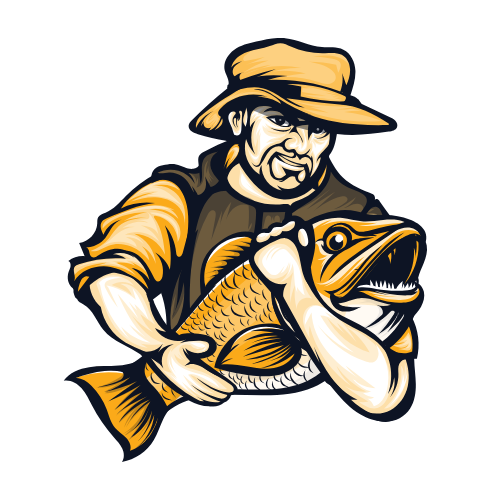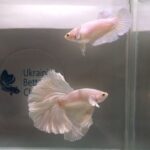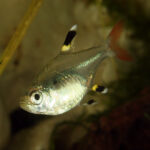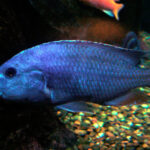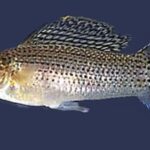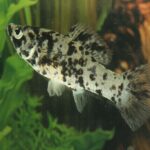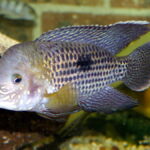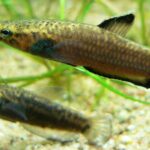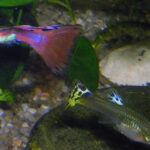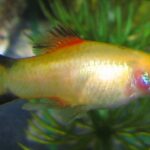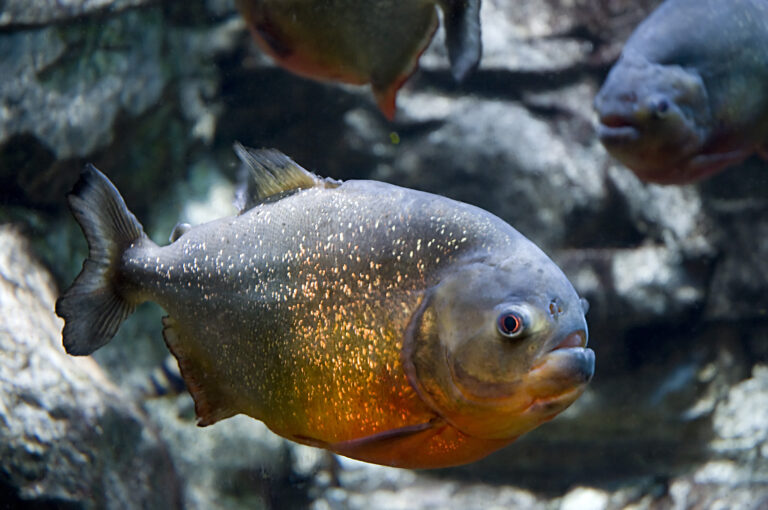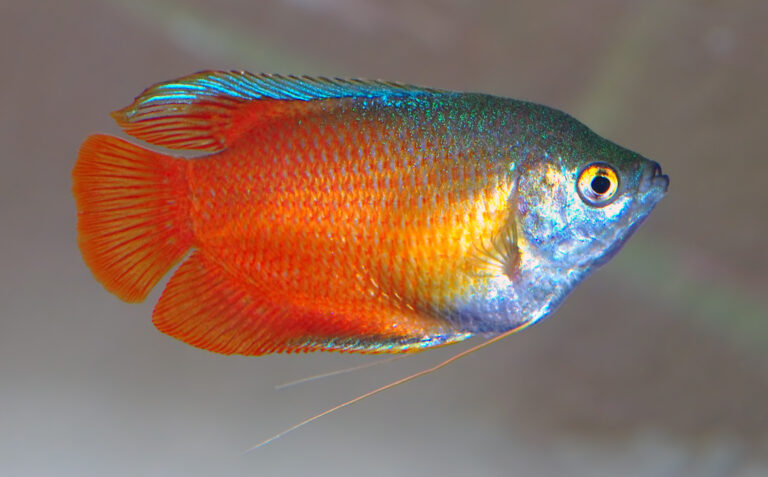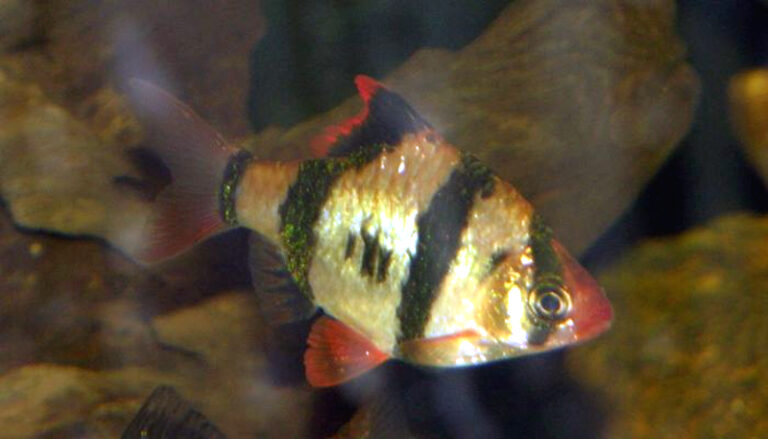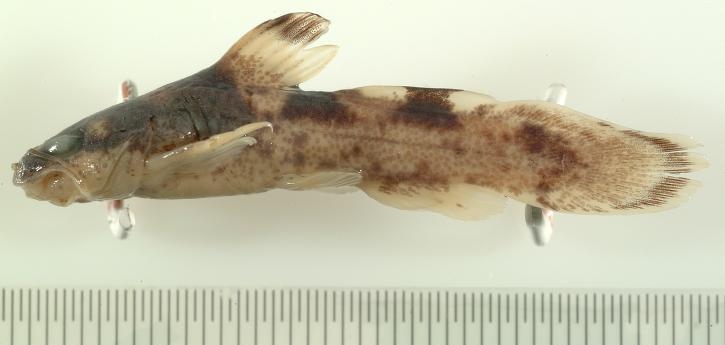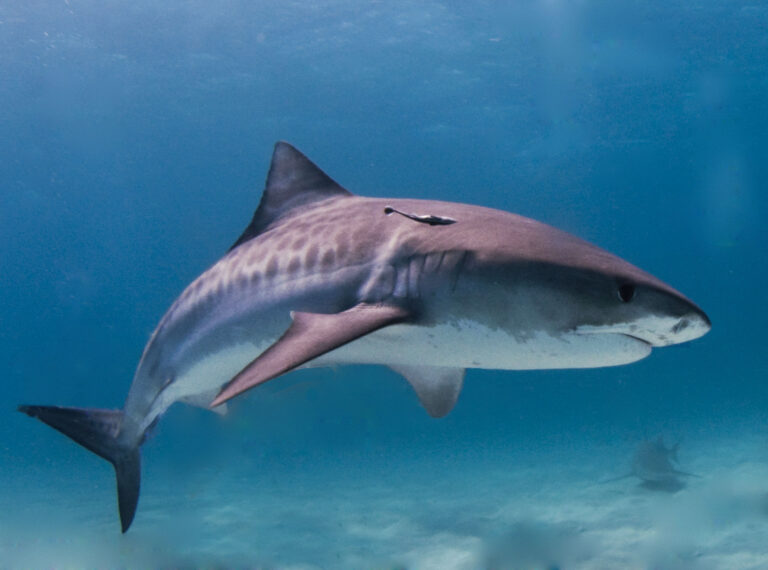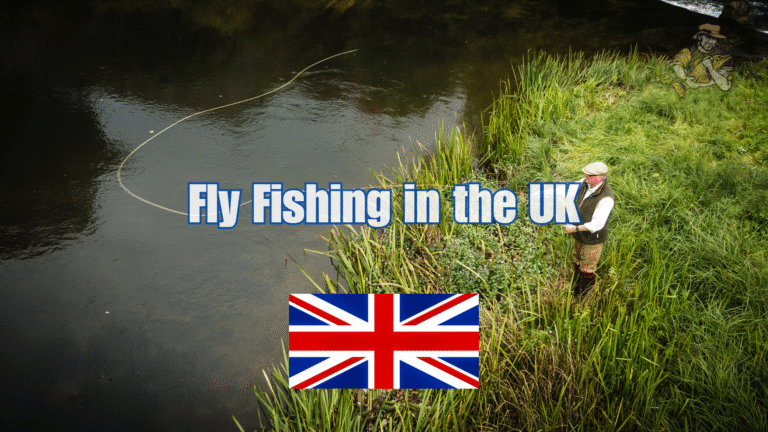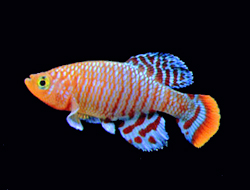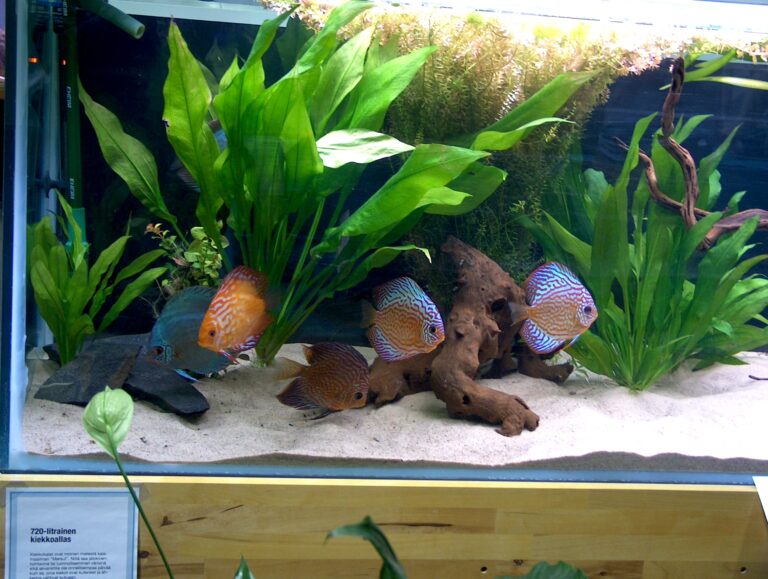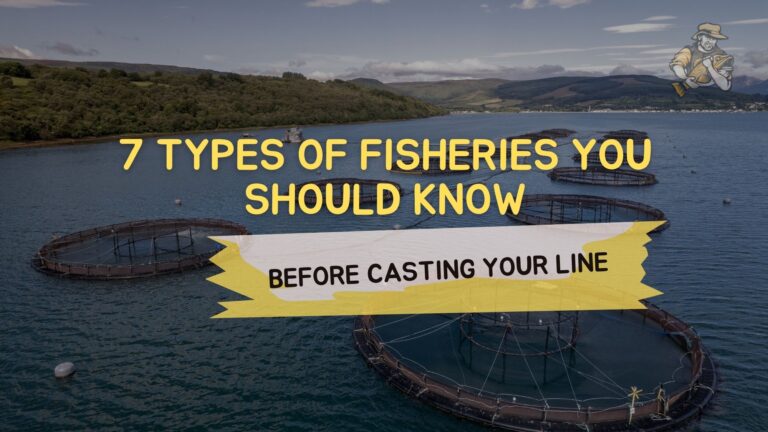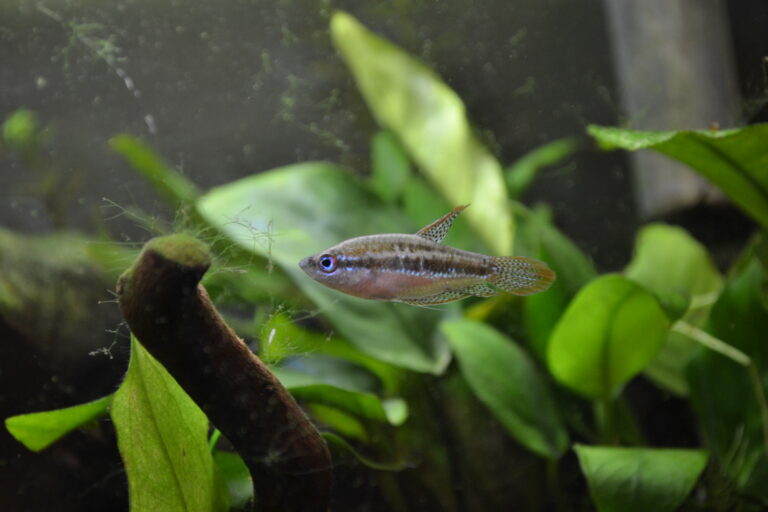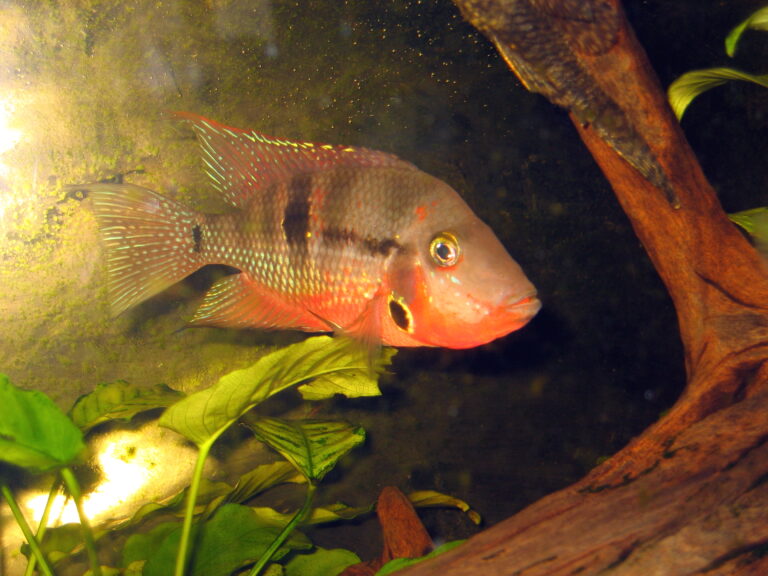Balloon Molly
By Ryan Maron | Last Modified: June 12, 2025
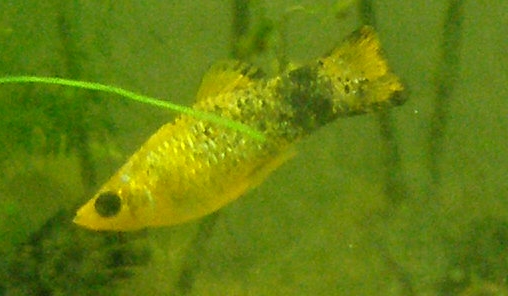
The Balloon Molly (*Poecilia latipinna* var.) represents one of the most distinctive and popular ornamental fish varieties in the freshwater aquarium trade. This selectively bred variant of the sailfin molly exhibits a characteristic rounded, balloon-like abdomen that distinguishes it from its wild-type ancestors. While primarily valued for their unique appearance and peaceful temperament, Balloon Mollies serve as important indicators of aquatic ecosystem health in captive environments and contribute significantly to the ornamental fish industry worldwide.
These livebearing fish play a crucial role in their aquatic communities as both algae consumers and intermediate predators, helping maintain ecological balance in planted aquarium systems. Their adaptability to varying water conditions and prolific breeding habits have made them essential subjects for genetic research and aquaculture development. The Balloon Molly’s commercial importance extends beyond hobbyist circles, supporting substantial breeding operations and contributing to local economies in fish-producing regions.
| Feature | Details |
|---|---|
| Common Name | Balloon Molly |
| Scientific Name | Poecilia latipinna var. |
| Family | Poeciliidae |
| Typical Size | 7-10 cm (2.8-4 inches), 15-25 grams |
| Habitat | Freshwater aquariums, planted tanks |
| Diet | Omnivorous – algae, plant matter, small invertebrates |
| Distribution | Captive populations worldwide |
| Conservation Status | Not Evaluated (Domestic variety) |
Taxonomy & Classification
The Balloon Molly belongs to the family Poeciliidae, which encompasses approximately 220 species of livebearing freshwater fish. This ornamental variety derives from selective breeding programs focused on *Poecilia latipinna*, commonly known as the sailfin molly. The taxonomic classification places these fish within the order Cyprinodontiformes, which includes killifish and other small freshwater species adapted to diverse aquatic environments.
Genetic analysis reveals that Balloon Mollies represent a morphological variant rather than a distinct subspecies. The characteristic balloon-shaped body results from selective breeding for shortened vertebral columns and modified swim bladder development. This phenotype appears to be controlled by multiple genetic factors, including recessive alleles that affect skeletal development and internal organ positioning.
The Poeciliidae family exhibits remarkable diversity in reproductive strategies, with all members demonstrating viviparity or live birth. Within this family, the genus *Poecilia* contains over 40 recognized species, many of which have contributed genetic material to modern aquarium strains. Molecular studies indicate that sailfin mollies diverged from their closest relatives approximately 2-3 million years ago, developing their distinctive dorsal fin morphology and adaptability to brackish water conditions.
Modern breeding programs have produced numerous color morphs and fin variations within the Balloon Molly lineage. These include dalmatian, orange, black, and silver varieties, each maintaining the characteristic rounded body profile while expressing different pigmentation patterns.
Physical Description
The Balloon Molly’s most distinctive feature is its dramatically rounded abdomen, which creates a balloon-like silhouette that distinguishes it from standard molly varieties. Adult specimens typically reach 7-10 centimeters in total length, with females generally growing larger and more robust than males. The compressed vertebral column results in a shortened body cavity that accommodates modified internal organ arrangement.
Sexual dimorphism becomes apparent at approximately 3-4 months of age. Males develop a pointed anal fin called a gonopodium, which serves as a reproductive organ for internal fertilization. Females retain the fan-shaped anal fin structure and exhibit fuller body profiles, particularly when gravid. The dorsal fin maintains the characteristic sailfin appearance inherited from *P. latipinna*, often displaying elaborate extensions in mature males.
Coloration varies significantly among breeding lines, ranging from solid blacks and oranges to complex spotted patterns reminiscent of dalmatian dogs. Iridescent scales often create metallic sheens under appropriate lighting conditions. The lateral line system remains functional despite body modifications, consisting of approximately 28-30 scales along the body’s length.
The modified body structure affects swimming efficiency, requiring Balloon Mollies to expend more energy for locomotion compared to their standard-bodied relatives. Fin positioning adapts to accommodate the altered center of gravity, with pectoral fins often positioned higher on the body profile. Eye size remains proportional to wild-type specimens, maintaining excellent visual acuity for feeding and predator detection.
Habitat & Distribution
Balloon Mollies exist exclusively in captive environments, having been developed through selective breeding programs initiated in Southeast Asian fish farms during the 1990s. These facilities primarily operate in tropical regions where consistent water temperatures support year-round breeding operations. Major production centers include Thailand, Singapore, Malaysia, and Florida, with smaller operations distributed across Central and South America.
The optimal captive habitat replicates the warm, alkaline conditions preferred by their sailfin molly ancestors. Water temperatures between 22-28°C (72-82°F) support active metabolism and reproductive behavior. pH levels ranging from 7.0-8.5 accommodate their preference for slightly alkaline conditions, while moderate hardness levels between 15-30 dGH provide essential mineral content.
Aquarium environments benefit from dense vegetation, which provides shelter and supplemental nutrition through algae growth on leaf surfaces. Platy fish often share similar habitat preferences, making them compatible tank mates in community aquarium setups. Substrate composition varies from fine sand to small gravel, allowing for natural foraging behaviors.
Water movement requirements remain moderate, as excessive current can stress these modified fish due to their reduced swimming efficiency. Filtration systems must maintain excellent water quality while providing gentle circulation. The balloon body structure makes these fish more susceptible to swim bladder disorders when exposed to rapid temperature or pressure changes.
Commercial breeding facilities often maintain these fish in greenhouse systems with controlled lighting cycles to optimize breeding frequency. Indoor aquaculture operations utilize recirculating systems that maintain consistent water parameters while minimizing disease transmission between breeding groups.
Diet & Feeding Behavior
Balloon Mollies exhibit omnivorous feeding behavior inherited from their wild sailfin molly ancestors, consuming both plant and animal matter with equal enthusiasm. Their diet consists primarily of algae, biofilm, small invertebrates, and organic detritus found throughout their aquatic environment. The modified digestive tract accommodates this varied nutritional intake while adapting to the compressed body cavity.
Feeding frequency in captive environments typically follows a schedule of 2-3 small meals daily, preventing overfeeding that could exacerbate swim bladder complications. High-quality commercial flakes or pellets provide balanced nutrition, while supplemental feedings of blanched vegetables supply essential fiber for digestive health. Spirulina-based foods support vibrant coloration and immune system function.
Live and frozen foods enhance breeding condition and overall vitality. Brine shrimp, bloodworms, and daphnia provide protein-rich nutrition that supports egg development in females and sperm production in males. Vegetable matter includes blanched spinach, lettuce, and specialized algae wafers that satisfy their natural grazing instincts.
The feeding mechanism involves rapid gill movement to create suction for capturing small food particles. Their terminal mouth position allows effective surface feeding and mid-water foraging. Standard molly fish display similar feeding patterns but often demonstrate greater foraging efficiency due to their unmodified body structure.
Digestive efficiency may be reduced compared to standard mollies due to compressed internal organ spacing. This necessitates easily digestible foods and careful portion control to prevent intestinal complications. Feeding behavior remains most active during daylight hours, corresponding to their natural circadian rhythms.
Behavior & Adaptations
Balloon Mollies demonstrate peaceful schooling behavior typical of poeciliid fish, forming loose aggregations that provide security through group vigilance. Social hierarchies develop within established groups, with dominant males displaying territorial behavior around preferred feeding sites and breeding areas. These interactions rarely escalate to aggressive encounters, maintaining community harmony in mixed-species aquarium environments.
Swimming patterns adapt to accommodate their modified body structure, resulting in characteristic undulating movements that differ from the rapid darting motions of standard mollies. Energy expenditure increases significantly during sustained swimming, requiring frequent rest periods near vegetation or decorative structures. This behavioral adaptation influences habitat selection toward areas with abundant shelter and minimal water current.
Reproductive behavior follows typical poeciliid patterns, with males pursuing females through elaborate courtship displays. The gonopodium positioning may be affected by body modification, potentially reducing fertilization success rates compared to unmodified strains. Successful breeding pairs often establish temporary territories during mating periods.
Temperature sensitivity increases due to modified internal organ spacing, requiring gradual acclimatization to environmental changes. Behavioral thermoregulation involves seeking optimal thermal zones within aquarium environments, often congregating in areas with consistent temperatures. This adaptation becomes critical during seasonal transitions or equipment maintenance periods.
Stress responses include reduced feeding activity, increased respiratory rates, and altered swimming patterns. Guppies and other livebearing fish share similar stress indicators, making behavioral observation crucial for maintaining optimal health conditions. Recovery typically occurs within 24-48 hours when stressors are eliminated and optimal conditions restored.
Reproduction & Life Cycle
Balloon Mollies reach sexual maturity at approximately 3-4 months of age, depending on water temperature and nutritional status. The livebearing reproductive strategy inherited from their poeciliid ancestry involves internal fertilization and gestation periods lasting 28-35 days. Females can store sperm for multiple reproductive cycles, producing successive broods without additional mating.
Gestation becomes visually apparent through abdominal distension, which may be less obvious in balloon varieties due to their already rounded body profile. Gravid females develop a distinctive gravid spot near the anal fin, darkening as embryonic development progresses. Brood sizes typically range from 20-40 fry, though this may be reduced compared to standard mollies due to limited internal space.
Parturition occurs gradually over several hours, with females releasing fully developed fry capable of immediate independent swimming and feeding. The newborn fry measure approximately 6-8 millimeters at birth and demonstrate positive phototaxis, swimming toward light sources. Parental care is minimal, with adults occasionally consuming their offspring if adequate shelter is unavailable.
Juvenile development follows predictable patterns, with sex determination becoming apparent at 6-8 weeks of age. Growth rates depend heavily on water temperature, food availability, and population density. Optimal conditions support maturation within 12-16 weeks, establishing the foundation for continuous breeding cycles.
The balloon body trait demonstrates incomplete dominance in genetic inheritance, with offspring displaying varying degrees of body modification. Breeding programs focus on selecting individuals with pronounced balloon characteristics while maintaining overall health and reproductive viability. Swordtail fish breeding programs employ similar selective techniques to maintain desirable ornamental traits.
Predators & Threats
In captive environments, Balloon Mollies face limited predation pressure compared to their wild ancestors, though certain aquarium inhabitants may pose threats to juveniles and weakened adults. Larger cichlids, angelfish, and predatory catfish species may view small mollies as prey items, particularly during vulnerable periods such as after feeding or during reproductive activities.
The modified body structure increases vulnerability to several health complications that rarely affect standard molly varieties. Swim bladder disorders represent the most significant threat, often resulting from the compressed internal cavity and modified organ positioning. These conditions can lead to buoyancy problems, making affected fish easy targets for aggressive tank mates.
Bacterial and fungal infections pose elevated risks due to potential immune system compromression associated with intensive selective breeding. Skin lesions and fin rot may develop more rapidly in balloon varieties, requiring prompt treatment to prevent systemic complications. Water quality deterioration affects these fish more severely than hardier aquarium species.
Shipping and handling stress during commercial distribution creates additional mortality risks. The modified anatomy makes these fish more susceptible to pressure changes and temperature fluctuations during transport. Specialized packaging techniques help minimize these risks, though losses remain higher than for standard molly varieties.
Genetic bottlenecks in breeding populations may reduce overall disease resistance, making entire lineages vulnerable to specific pathogens. Responsible breeding programs maintain genetic diversity through careful lineage management and occasional outcrossing with related molly species to preserve hybrid vigor.
Conservation Status
The Balloon Molly lacks formal conservation status assessment, existing solely as a domesticated ornamental variety without wild populations requiring protection. However, the genetic diversity within captive breeding programs represents a form of ex-situ conservation for poeciliid genetic resources. The International Union for Conservation of Nature (IUCN) does not evaluate selectively bred varieties, focusing instead on wild species and their natural habitats.
Commercial breeding operations inadvertently serve conservation functions by maintaining genetic lineages that preserve aspects of sailfin molly biodiversity. These programs require ongoing management to prevent inbreeding depression and maintain reproductive viability across breeding populations. Genetic bottlenecks remain a concern as popular color morphs become concentrated in limited breeding facilities.
The ornamental fish trade supports conservation awareness by introducing millions of people to aquatic biodiversity appreciation. Educational programs associated with responsible fishkeeping often extend to wild species conservation and habitat protection initiatives. This indirect conservation benefit contributes to broader environmental awareness campaigns.
Breeding facility sustainability becomes increasingly important as environmental regulations affect aquaculture operations. Water usage efficiency, waste management, and energy consumption optimization help reduce the environmental footprint of commercial molly production. These practices support long-term industry viability while minimizing ecological impacts.
Research applications utilizing Balloon Mollies contribute to understanding developmental biology and genetic modification effects in vertebrate systems. This scientific knowledge supports broader conservation genetics efforts for endangered fish species facing similar genetic bottlenecks in wild populations.
Human Interaction
The global ornamental fish industry heavily depends on Balloon Molly production, with millions of specimens traded annually across international markets. Commercial breeding facilities in Southeast Asia supply the majority of these fish to wholesale distributors, who then distribute them to retail outlets worldwide. This economic activity supports thousands of jobs in rural areas where alternative employment opportunities may be limited.
Hobbyist breeding programs contribute significantly to maintaining genetic diversity within captive populations. Advanced aquarists often specialize in developing new color morphs or improving existing strains through selective breeding techniques. These efforts supplement commercial production while preserving rare genetic lineages that might otherwise disappear from the trade.
Educational applications extend beyond basic fishkeeping to include classroom demonstrations of genetics, reproduction, and aquatic ecology. Their peaceful temperament and interesting behavior make them ideal subjects for teaching responsible pet ownership and basic biological concepts. Many students gain their first exposure to aquatic sciences through molly breeding projects.
Therapeutic applications in assisted living facilities and medical settings utilize the calming effects of aquarium observation. Balloon Mollies contribute to these therapeutic environments through their active behavior and attractive appearance. Research supports the stress-reduction benefits of aquarium viewing, particularly for elderly patients and individuals with anxiety disorders.
The species serves as an indicator organism for aquarium water quality assessment, with behavioral changes often signaling environmental problems before they affect other tank inhabitants. Experienced aquarists monitor molly behavior as an early warning system for developing issues requiring intervention.
Interesting Facts
Balloon Mollies can survive in slightly brackish water conditions inherited from their sailfin molly ancestry, though their modified body structure may reduce salt tolerance compared to standard varieties. This adaptation allows them to thrive in hard water aquarium systems that would stress many other tropical fish species.
The balloon body modification affects neutral buoyancy, requiring these fish to expend additional energy maintaining their desired depth in the water column. Observation reveals that they often rest on broad-leaved plants or aquarium decorations to conserve energy during inactive periods.
Color-changing abilities in certain breeding lines allow individual fish to intensify or fade their pigmentation based on mood, breeding condition, and social status. This phenomenon becomes most apparent during courtship displays and territorial interactions.
Some Balloon Molly strains demonstrate enhanced algae consumption rates compared to other aquarium fish of similar size, making them valuable biological control agents for managing unwanted algae growth in planted aquarium systems. Their constant grazing behavior helps maintain clean glass surfaces and plant leaves.
Longevity in optimal aquarium conditions can reach 3-5 years, though the modified anatomy may reduce average lifespan compared to standard molly varieties. Proper nutrition and water quality management significantly influence individual survival rates and reproductive longevity.
The species demonstrates remarkable adaptability to artificial lighting conditions, adjusting their circadian rhythms to match aquarium photoperiods. This flexibility allows successful maintenance in indoor environments without natural daylight exposure.
Frequently Asked Questions
How long do Balloon Mollies live in aquarium conditions?
Balloon Mollies typically live 2-4 years in well-maintained aquarium environments, though some individuals may reach 5 years with optimal care. Their modified body structure may slightly reduce longevity compared to standard molly varieties, making consistent water quality and proper nutrition essential for maximizing lifespan.
Can Balloon Mollies breed with other molly types?
Yes, Balloon Mollies can successfully crossbreed with other molly varieties, including sailfin, black, and dalmatian mollies. The offspring may display varying degrees of the balloon body trait, depending on the genetic contribution from each parent. These hybrid crosses often demonstrate increased vigor and may have improved swimming ability compared to pure balloon strains.
What water temperature is best for Balloon Mollies?
Optimal water temperature ranges from 24-26°C (75-79°F) for Balloon Mollies, though they can tolerate temperatures between 22-28°C (72-82°F). Stable temperature maintenance is more critical for balloon varieties than standard mollies due to their modified internal anatomy and reduced stress tolerance.
Do Balloon Mollies require special dietary considerations?
Balloon Mollies benefit from easily digestible foods fed in smaller, more frequent portions compared to standard molly varieties. Their compressed internal cavity may reduce digestive efficiency, making high-quality flake foods, blanched vegetables, and occasional live foods optimal for maintaining health and preventing intestinal complications.
Conclusion
The Balloon Molly represents a fascinating example of selective breeding achievements within the ornamental fish industry, combining aesthetic appeal with the hardy characteristics of their sailfin molly ancestors. While their modified anatomy presents certain challenges in husbandry and health management, these remarkable fish continue to serve important roles in aquarium ecosystems, educational programs, and commercial aquaculture operations worldwide. Their ongoing popularity ensures continued genetic preservation efforts while supporting sustainable breeding practices that benefit both the industry and aquatic biodiversity conservation initiatives.
Share The Article:
More Fish Species:
-
Red Belly Piranha
The Red Belly Piranha (*Pygocentrus nattereri*) stands as one of South America’s most misunderstood freshwater predators, wielding razor-sharp teeth…
-
Congo Tetra
The Congo Tetra stands as one of Africa’s most remarkable freshwater fish species, captivating aquarists and ichthyologists alike with…
-
Honey Gourami
The Honey Gourami (*Trichogaster chuna*) stands as one of the most captivating freshwater fish species in the aquarium trade,…
-
Tiger Barb
The Tiger Barb (Puntigrus tetrazona) stands as one of Southeast Asia’s most recognizable freshwater cyprinids, distinguished by its vibrant…
-
Madtom Catfish
The Madtom Catfish represents one of North America’s most fascinating yet underappreciated groups of freshwater fish. These diminutive members…
-
Lionhead Goldfish
The Lionhead Goldfish represents one of the most distinctive and cherished ornamental varieties within the goldfish family, captivating aquarists…
Discover
-
Tiger Shark
The Tiger Shark (Galeocerdo cuvier) represents one of the ocean’s most formidable apex predators, earning its distinctive name from…
-
Surfcasting Techniques: Master Beach Fishing and Catch More Fish
There’s something almost magical about standing at the edge of an ocean, rod in hand, as waves crash around…
-
Fly Fishing in the UK: Top Rivers and Seasonal Patterns
After nearly three decades casting flies across waters from Michigan to Maine – and now spending several weeks each…
-
Best Fishing Reels for Any Budget: Complete Guide 2025
When it comes to finding the best fishing reels, quality doesn’t always mean emptying your wallet. After testing hundreds…
-
Best Fishing Line for Bass in 2025: What Actually Works
I still remember the day I lost that monster largemouth on Lake St. Clair back in 2019. The fish…
-
7 Best Family-Friendly Fishing Destinations in the U.S. (Tested with Kids!)
I still remember the first time I took my son Tommy fishing. He was five, armed with a Spider-Man…
Discover
-
Killifish
Killifish represent one of the most diverse and ecologically significant groups of small freshwater and brackish water fish, comprising…
-
Discus Fish
The Discus Fish (Symphysodon spp.) stands as one of the most revered species in the freshwater aquarium trade, earning…
-
7 Types of Fisheries You Should Know Before Casting Your Line
I’ve been fishing for over 30 years across all kinds of waters, and one thing I’ve noticed is how…
-
Sparkling Gourami
The Sparkling Gourami represents one of the most captivating miniature freshwater species available to aquarium enthusiasts and serves as…
-
New York Fishing License: Costs, Types & Where to Buy in 2025
Figuring out fishing licenses can be a headache, especially when you’re just eager to get out on the water….
-
Firemouth Cichlid
The Firemouth Cichlid (*Thorichthys meeki*) stands as one of Central America’s most recognizable freshwater fish species, distinguished by its…
